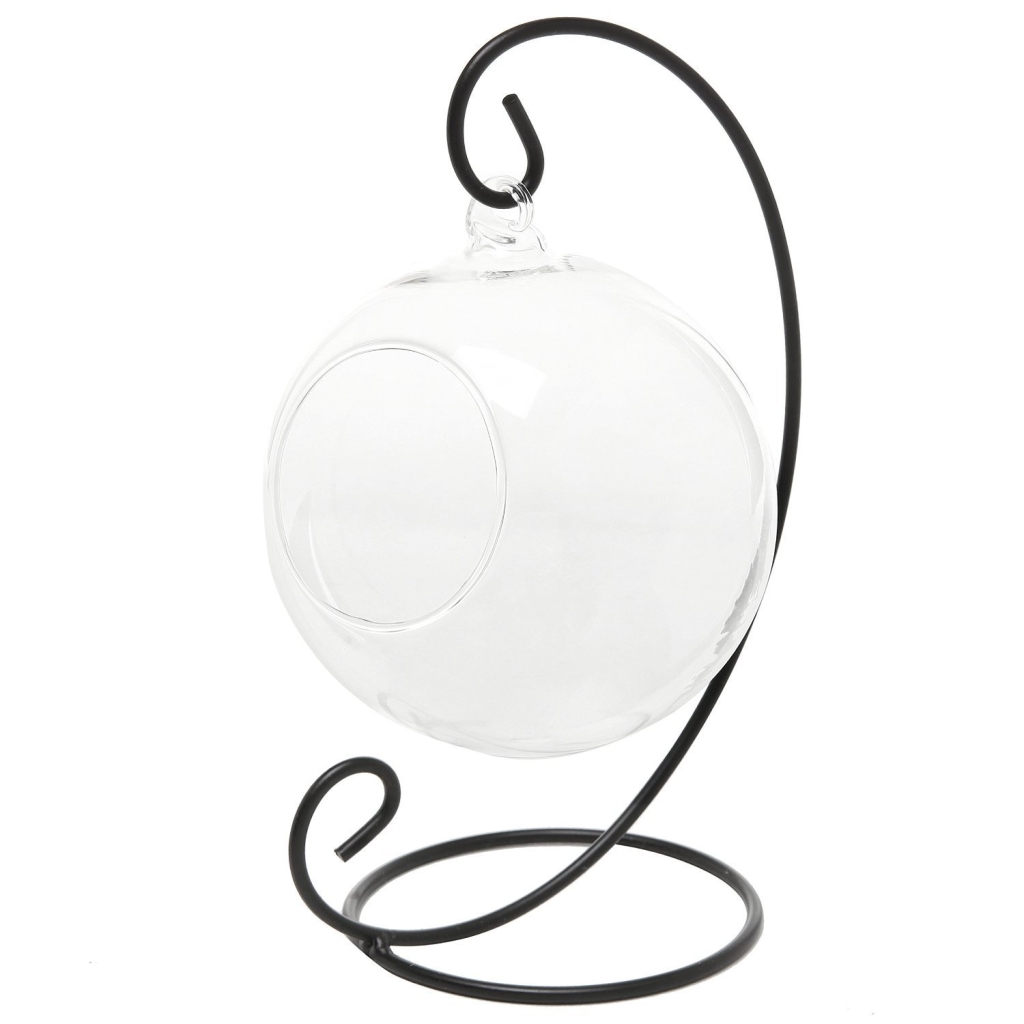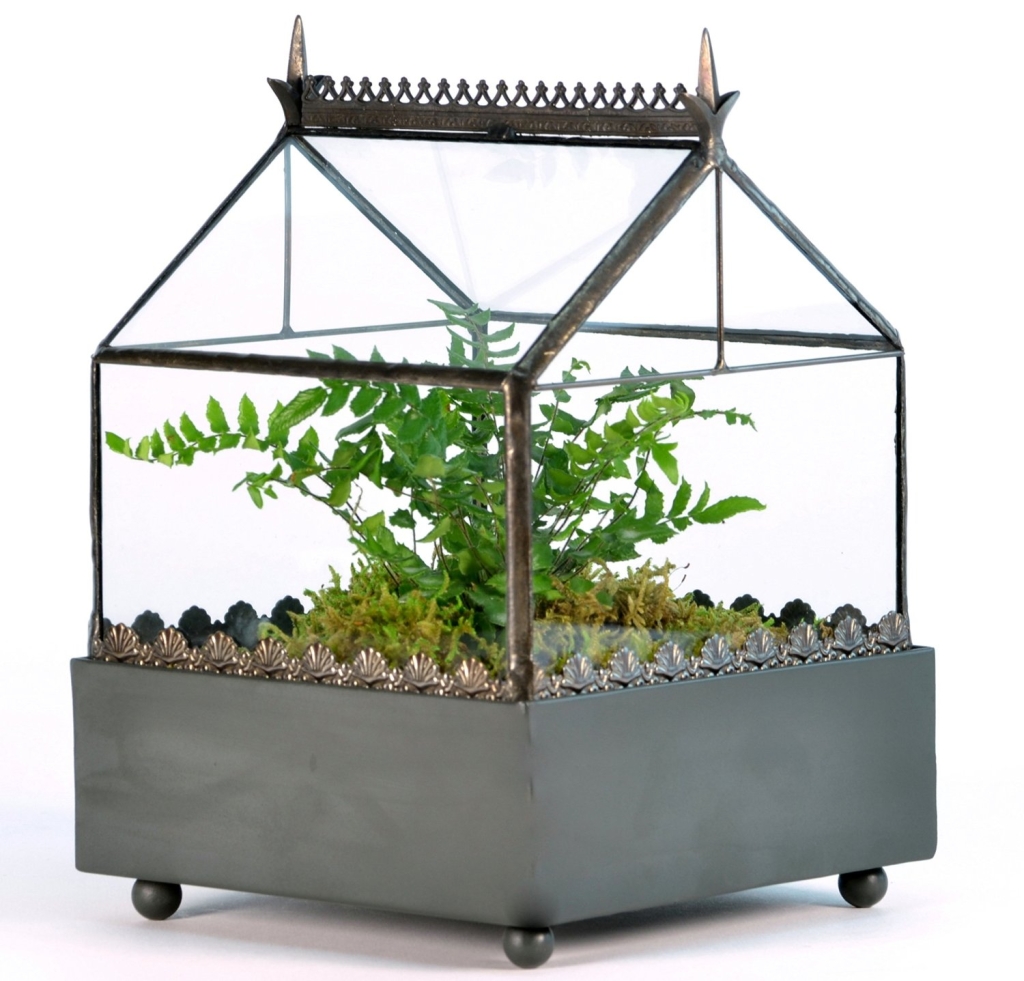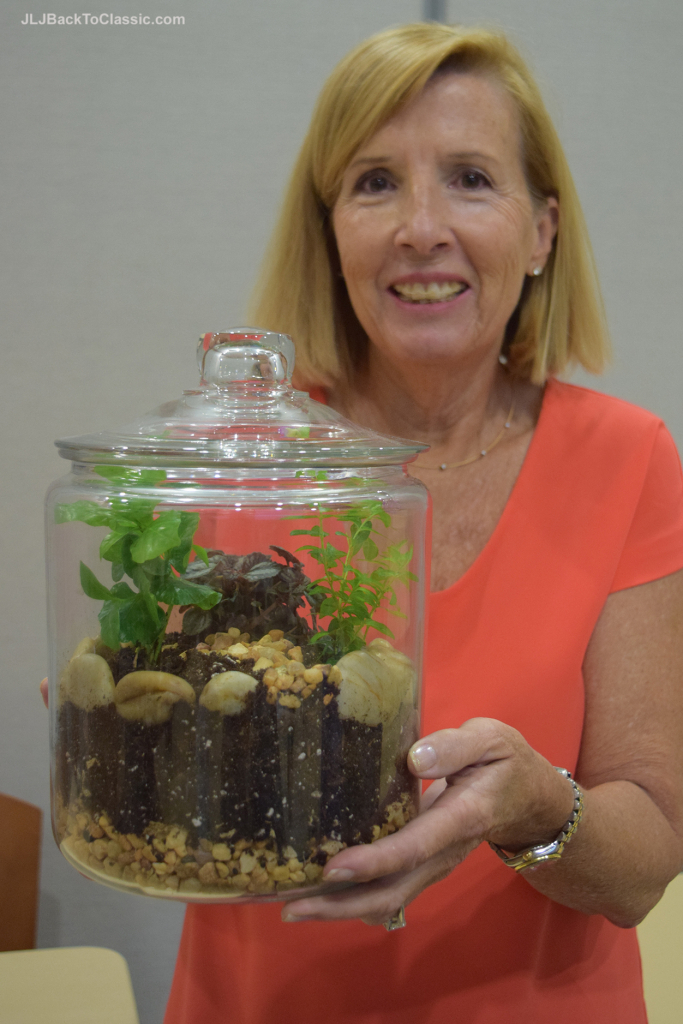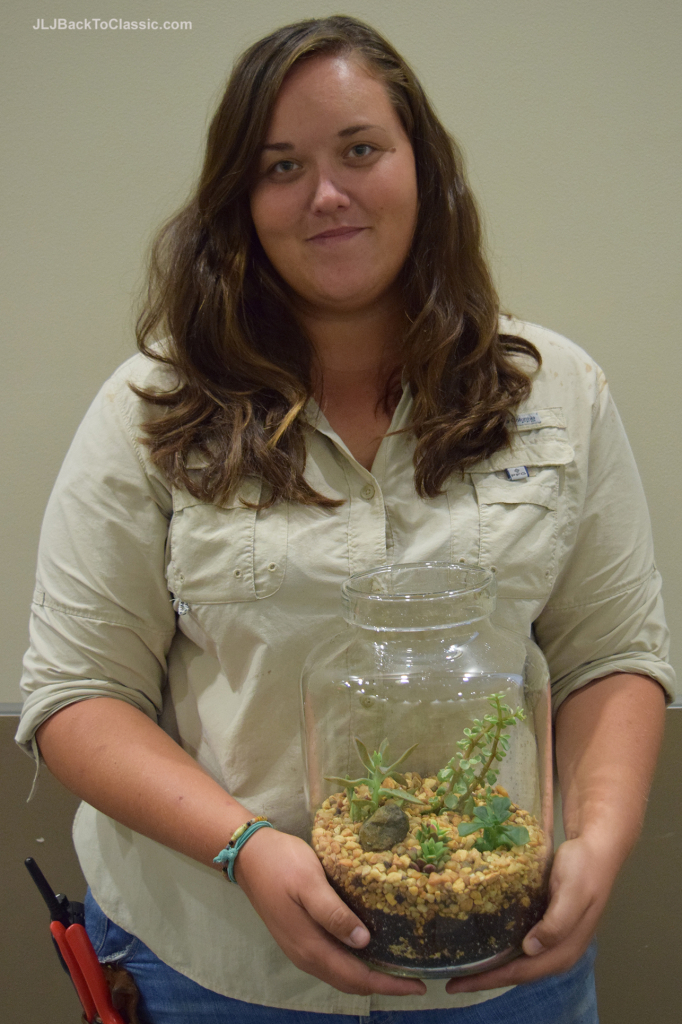(ABOVE) Glass Wardian Case with resin bottom. Measures 17″ L x 11.5″ W x 22″ H.
Wardian cases make me happy. So do Victorian doll houses. Both are such pretty little things. I love that they are miniature versions of classic, traditional structures–and that each can hold more pretty little things inside.
Dr. Nathaniel Bagshaw Ward created the portable greenhouse known as a Wardian case in 1829. He used them to house and protect the fragile seedlings of ferns that could not grow in his garden, due to heavy pollution in East London at the time. (That isn’t how he used his invention initially, however. For more on the Wardian case’s interesting history, click here.) Over time, the Wardian case became popular for transporting living plants all over the world, and ornamental varieties were made for displaying plants in Victorian homes.
I have two Wardian cases in my home. Both are made out of metal and glass. One came with a matching stand, the other was made for a table top, and both are painted white. Neither is an antique–they were purchased at Home Goods 10 or so years ago–and I absolutely love looking at them. Through the years I’ve vacillated back and forth about what to put inside. They’ve seen everything from my collection of miniature wire garden furniture to potted faux plants.
Last summer, I took a class at Naples Botanical Garden to learn how to make a miniature garden for a terrarium, the modern version of the Wardian case. A terrarium is usually a glass container, but the planting instructions for either are about the same. After seeing my finished project (inside a glass jar), I decided simple, potted orchids were a safer choice for my Wardian cases.
However, for those of you who do have a miniature-garden green thumb, I’ve included the notes from my class at the bottom of this page. Our instructor, Emily Wilson, was great. But I, clearly, was not great at following her directions! ~Janis Lyn Johnson
Scroll To Bottom of Page For How To Make A Terrarium (or Wardian Case) Garden
(ABOVE) Square, Gothic-Style Glass Wardian case.
(ABOVE) A potted orchid, fern, preserved reindeer moss, and stones in a large Footed Cylinder Terrarium. (BELOW) Light Cloche with included footed plate, 11″ x 7.5″. Has an opening to allow a strand of lights to be threaded inside (lights not included).
 (ABOVE) Clear Glass Hanging Globe, with stand, available in 8″, 11.5″, or 13.5″ tall. Can be used for succulents, air plants, or tea lights.
(ABOVE) Clear Glass Hanging Globe, with stand, available in 8″, 11.5″, or 13.5″ tall. Can be used for succulents, air plants, or tea lights.
HOW TO MAKE A TERRARIUM GARDEN (Courtesy Naples Botanical Garden)
Supplies Needed: Clear glass container, gravel, sphagnum moss, charcoal, soil, fairy garden plants (2″ pots), spoon, small paint brush. For a closed-container (has a lid, such as a mason jar, which seals in moisture), choose ferns, herbaceous perennials, and mosses. For an open container, choose succulents and also ferns, herbaceous perennials, and mosses.
Directions
Note: Leave the top 2/3 of the container as open space. Fill only the bottom third with the gravel, sphagnum moss, charcoal, and soil, to leave room for the plants. Adjust the amounts of each item, depending on the height of your container.
- Add a 1″ layer of gravel.
- Add a thin layer of sphagnum moss to act as a buffer from too much watering and to separate the gravel from the next layer, charcoal.
- Add 1/4 inch of charcoal (this absorbs any unpleasant odors created from plant matter breaking down).
- Add 2 inches of soil.
- Add 3, 5, or more plants, depending on size of container, placing the tallest plant in the middle. (An uneven number of plants is generally more pleasing to the eye.) Fairy garden plants work best, because of their miniature size (2″ pots).
- Use the back of a spoon to tamp down the soil around each plant.
- Use a dry paint brush to brush any stray soil off of plant leaves and the inside wall of the glass container.
- Add more gravel, dried moss, or a figurine for decoration.
Maintenance
Open Container (Ferns, Herbaceous Perennials, Mosses)
- Water each plant one tablespoon at a time. Generally, watering the plants once or twice a week should suffice. If the soil appears dry, add an extra tablespoon or so. If the soil looks/feels saturated, skip a day or two of watering.
- Place the container where it will receive indirect sunlight. As the plants grow, selectively prune to maintain desired appearance.
Open Container (Succulents)
- Succulents are an excellent choice for an open container. They require little water and typically grow quite slowly.
- Water the plants one tablespoon at a time about every two to three weeks.
- In most cases, you can propagate a succulent by removing a leaf and laying it into the soil.
- Place the container in a dry, part-sun area. As the plants grow, selectively prune to maintain desired appearance.
Closed Container (Ferns, Herbaceous Perennials, Mosses)
As soon as you construct your new plant home, water each one with no more than one tablespoon of water. Close the lid and make observations during the next few days: the amount of condensation; plants looking crispy, wilted, or stressed.
- If no condensation on the glass, the soil looks too dry, and the plants look stressed, add an additional tablespoon of water to each plant. Re-asses after a few days.
- If large amount of condensation on the glass, the soil is saturated with water, and the plants look stressed or leaves are turning black, leave the container open for a few days to let the moisture escape. Close it and continue to make observations.
- If small amount of condensation on the glass, the soil looks moist but not saturated, and the plants look happy, then all is well. No other action is required other than routine pruning.
Be sure to place your closed-container terrarium in an area that receives a small amount of indirect light. Direct sun is not good for closed systems and will harm your plants.
Note: For a fun and interesting video on planting a Wardian case, see this post at marthastewart.com.
(ABOVE) Fellow classmate Caroline Folkman with her pretty terrarium. (BELOW) Our terrific instructor, Naples Botanical Garden Native Plant Specialist Emily Wilson, with her terrarium.
Some links in this post are affiliate links, which means if you click on a link and make a purchase I may make a small fee, at no cost to you. For more information about my affiliates, see here.







Leave A Comment